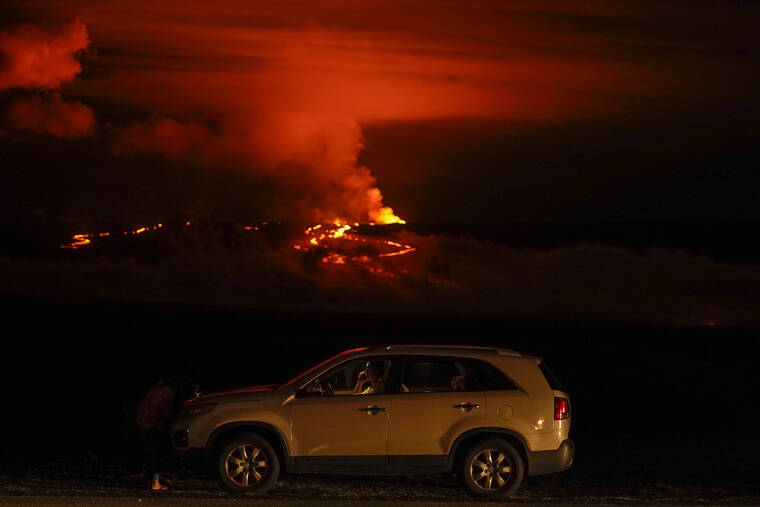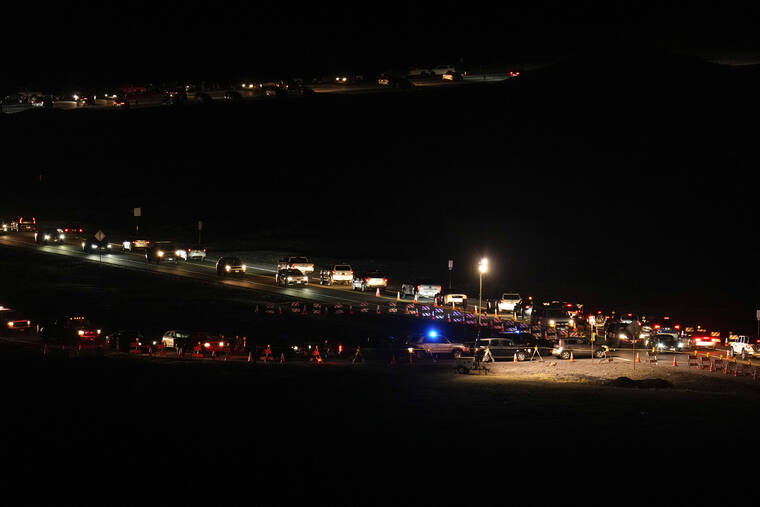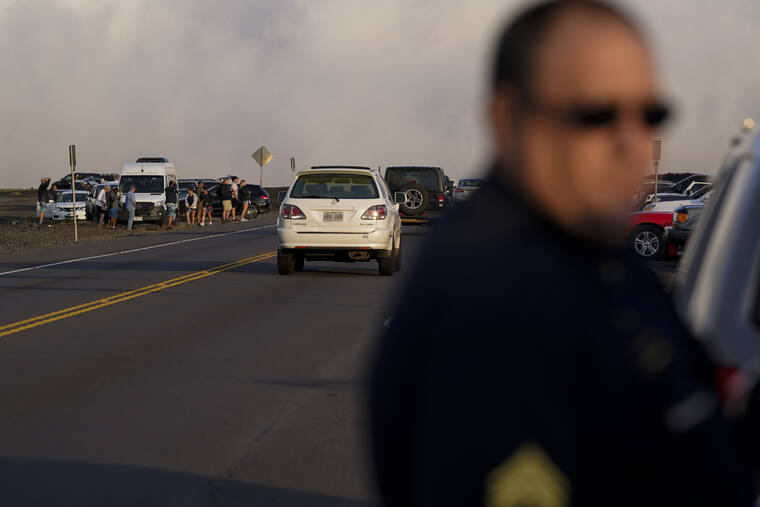National Guard activated to assist with traffic control amid Mauna Loa eruption
Now-former-Gov. David Ige activated the Hawaii National Guard on Monday to assist Hawaii County with traffic control during the Mauna Loa eruption.
Ige and Maj. Gen. Kenneth Hara announced that about 20 service members will help the Hawaii Police Department manage traffic on the Daniel K. Inouye Highway, also known as Saddle Road, where thousands are flocking each day to try to get a glimpse of the lava.
The state Department of Defense stated that the term of the Hawaii National Guard activation is 30 days, although that could be extended or curtailed as circumstances warrant.
HPD spokeswoman Denise Laitinen said there was one citation issued Sunday to a vehicle illegally parked alongside the highway, as well as a pair of minor traffic collisions. Last week, more than two dozen citations were issued.
Mayor Mitch Roth urged drivers to remain cautious on the highway and on the Traffic Hazard Mitigation Route that opened last week on Old Saddle Road across from the Gilbert Kahele Recreation Area. Roth also asked drivers to pick up after themselves and not leave trash behind on the mountain.
The mitigation route briefly closed Sunday after unexploded ordnance was found near the Route, which runs through the Pohakuloa Training Area.
PTA Garrison Commander Lt. Col. Kevin Cronin said Monday that the closure was in keeping with the Army’s typical handling of unexploded ordnance, and that the lava does not currently threaten any PTA personnel or facilities.
The eruption itself still poses no direct threat to anybody, with the leading edge of its flow about 2.1 miles from the intersection of the highway and Old Saddle Road near Pu‘u Huluhulu and moving at about 20 feet per hour by Monday afternoon.
U.S. Geological Survey geologist Drew Downs said Monday that based on the current pace and spreading of the Mauna Loa flow, it is still “over a week away” from the highway, if it reaches it at all.
Ken Hon, scientist in charge for the U.S. Geological Survey Hawaiian Volcano Observatory, said that a minor fork broke out from the main lava flow over the weekend and was moving northwest Monday morning. However, he added that the breakout was likely to run out of steam before long.
The lava flow is still primarily being fed by Fissure 3 on Mauna Loa’s northeast flank. Hon said the fissure is emitting between 100 to 150 cubic yards of material per second, a comparable rate to the 2018 Kilauea eruption.
The total area covered by the flow is about 13.5 square miles, although the active flow only covers 4.1 square miles.
Lava from Fissure 3 remains of a similar composition to when it started, Hon said, explaining that the lava is “bubbly” — water has dissolved within the lava, he said, which has prevented it from developing crystals. Crystallized lava is more viscous and slow-moving, Hon said, and is less likely to remain within a coherent channel.
That said, Hon reiterated that now that the lava is on flat ground, it no longer behaves predictably as a fluid would. It is still unclear whether the flow will gravitate more toward the east or west or whether it will reach the highway.
“You’d have to be really into fluids to call the lava a fluid,” Hon said.
Email Michael Brestovansky at mbrestovansky@hawaiitribune-herald.com.




